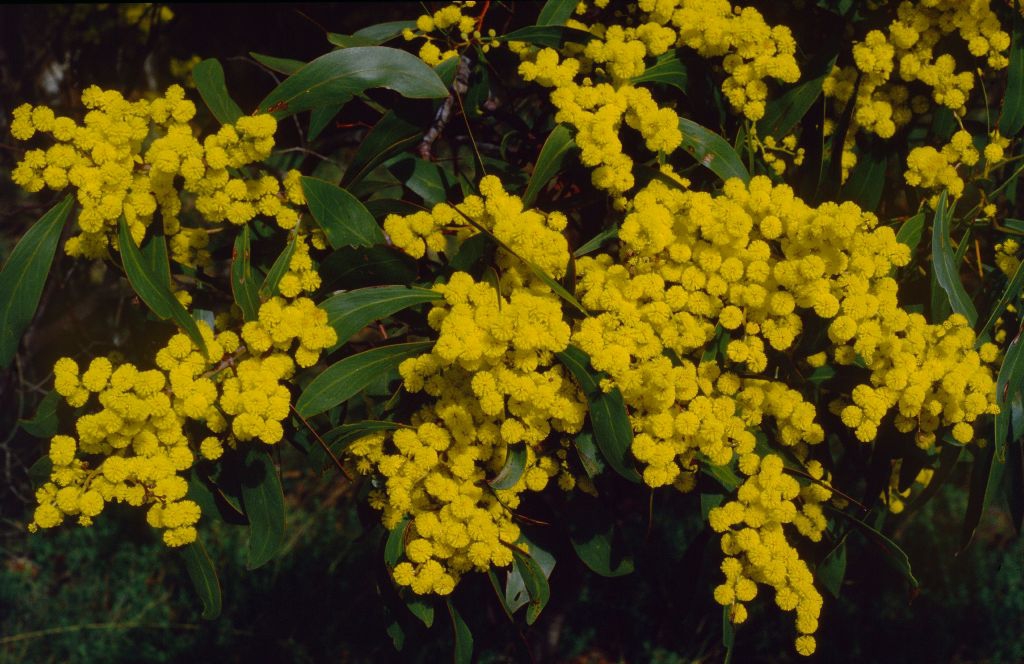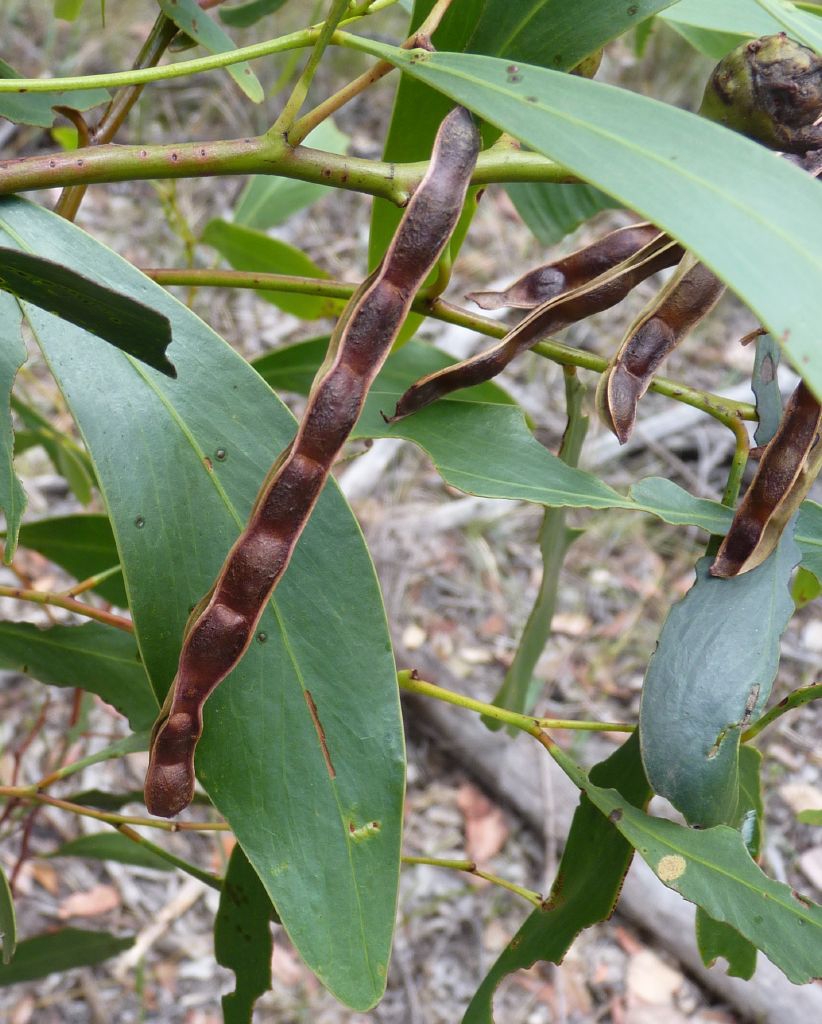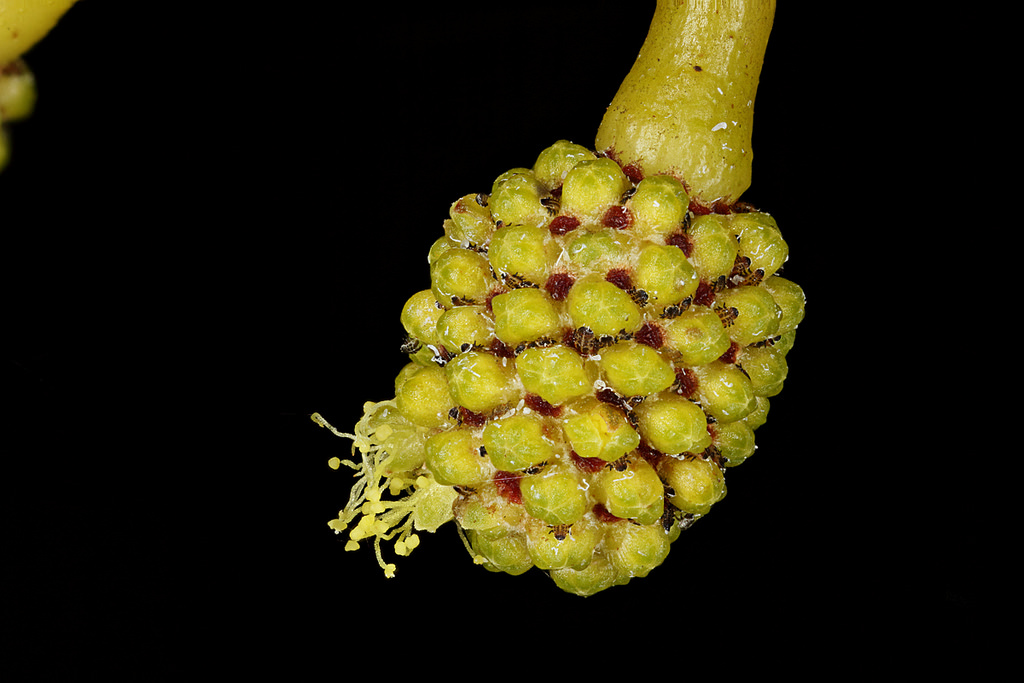Fruits/Seeds
Long seed pods are more or less oblong, 5.5-6cm long, seeds somewhat shiny, black and club-shaped.
Field Guide
Improve your identification skills. Download your Goldern Wattle field guide here!
The species name pycnantha from the Greek (pyknos) meaning dense, and (anthos) meaning a flower, refers to the dense clusters of flowers.
Small shrub or tree. Usually 3 - 8 m high.
Has phyllodes (flattened leaf stalks) that are pinnate (arranged opposite each other on either side of the stem) and sickle-shaped 9 - 15 cm long and 1 - 3.5 cm wide; branchlets on leaves are hairy, sometimes covered in white powdery granules.
Bright golden and sometimes lemon-yellow ball-shaped inflorescences (clusters flowers arranged on a stem). Flowers appear in late winter and spring and into early summer (July to November).
Long seed pods are more or less oblong, 5.5-6cm long, seeds somewhat shiny, black and club-shaped.
Improve your identification skills. Download your Goldern Wattle field guide here!

First fully open single flower (each ‘flower ball’ is actually a cluster of 40-80 flowers)
Full flowering (record all days)
End of flowering (when 95% of the flowers have faded)
No flowering
Open Seed pods (record all days)
The Golden Wattle is expected to alter its shooting and flowering periods as a result of climate change impacting temperature and rainfall. They may also start appearing in new areas, as climate change enables them to live in environments that were previously unsuitable for them.


It was made the official floral emblem of Australia in 1988.
A flower in an inflorescence are referred to as ‘florets’.